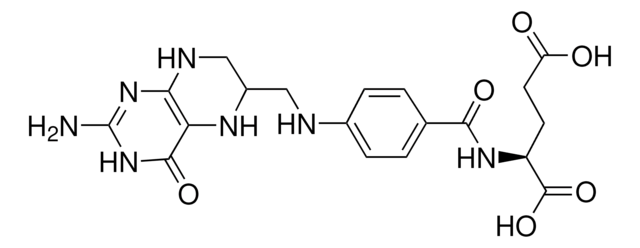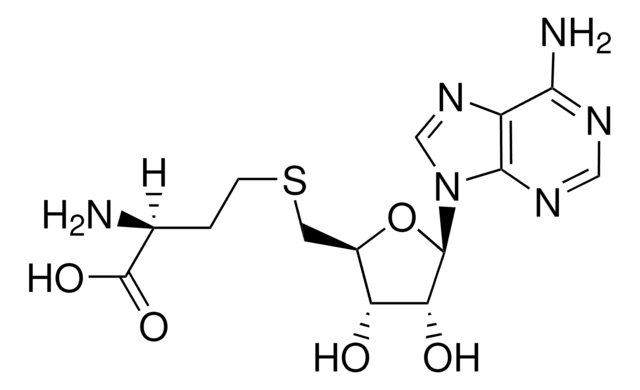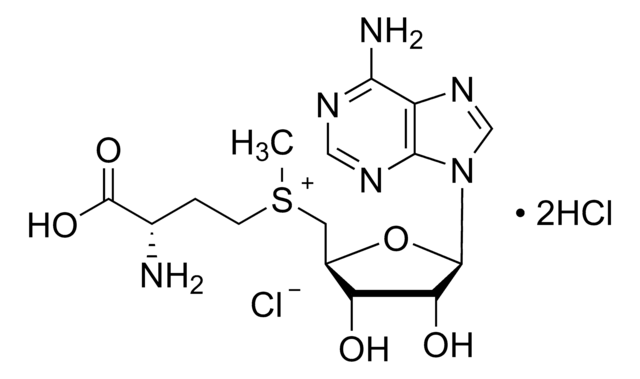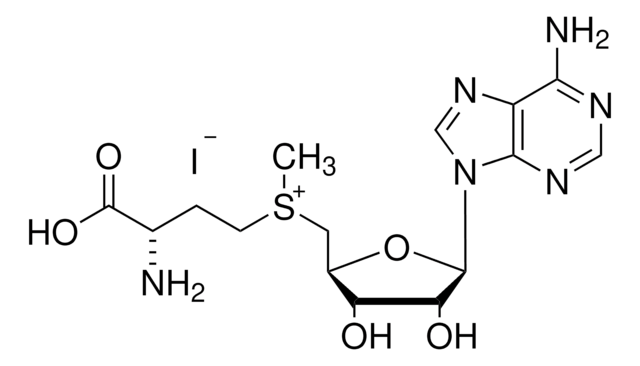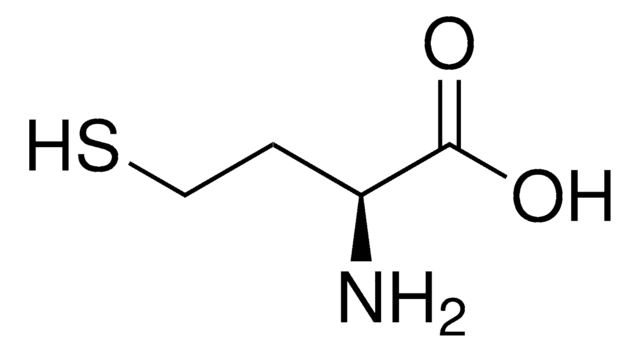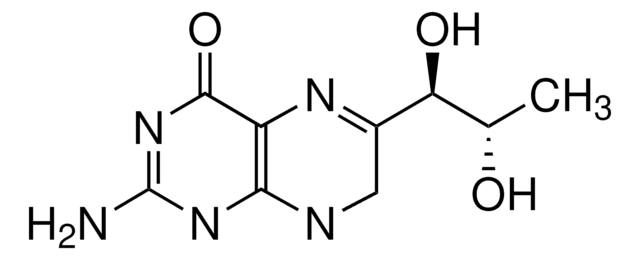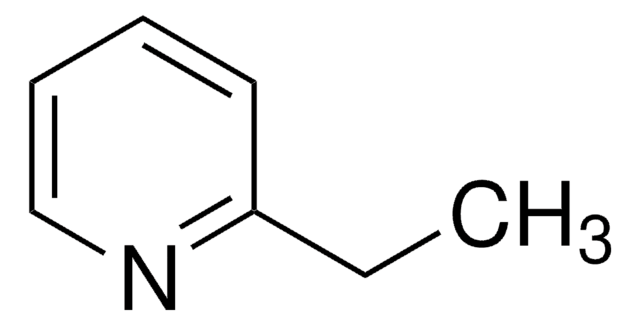D7006
Dihydrofolic acid
≥90%
Synonyme(s) :
7,8-Dihydropteroyl-L-glutamic acid, Dihydropteroyl-L-glutamic acid, FAH2
About This Item
Produits recommandés
Source biologique
synthetic (organic)
Niveau de qualité
Essai
≥90%
Forme
powder
Couleur
light yellow to dark yellow-orange
Température de stockage
−20°C
Chaîne SMILES
NC1=NC(=O)C2=C(NCC(CNc3ccc(cc3)C(=O)N[C@@H](CCC(O)=O)C(O)=O)=N2)N1
InChI
1S/C19H21N7O6/c20-19-25-15-14(17(30)26-19)23-11(8-22-15)7-21-10-3-1-9(2-4-10)16(29)24-12(18(31)32)5-6-13(27)28/h1-4,12,21H,5-8H2,(H,24,29)(H,27,28)(H,31,32)(H4,20,22,25,26,30)/t12-/m0/s1
Clé InChI
OZRNSSUDZOLUSN-LBPRGKRZSA-N
Informations sur le gène
human ... DHFRP1(573971)
mouse ... Dhfr(13361)
Vous recherchez des produits similaires ? Visite Guide de comparaison des produits
Catégories apparentées
Description générale
Application
Actions biochimiques/physiologiques
Conditionnement
Produit(s) apparenté(s)
Mention d'avertissement
Warning
Mentions de danger
Conseils de prudence
Classification des risques
Eye Irrit. 2 - Skin Irrit. 2 - STOT SE 3
Organes cibles
Respiratory system
Code de la classe de stockage
11 - Combustible Solids
Classe de danger pour l'eau (WGK)
WGK 3
Point d'éclair (°F)
Not applicable
Point d'éclair (°C)
Not applicable
Équipement de protection individuelle
dust mask type N95 (US), Eyeshields, Gloves
Faites votre choix parmi les versions les plus récentes :
Déjà en possession de ce produit ?
Retrouvez la documentation relative aux produits que vous avez récemment achetés dans la Bibliothèque de documents.
Les clients ont également consulté
Articles
This issue of Biofiles reviews some of our newest and most innovative technologies and their specific applications toward cancer research. In preparing this issue of Biofiles, one is reminded how complex the disease of cancer is, and how difficult it is to identify one topic that is completely unrelated to any other.
This article reviews some of our newest and most innovative technologies and their specific applications toward cancer research. It describes how complex the disease of cancer is, and how difficult it is to identify one topic that is completely unrelated to any other.
Notre équipe de scientifiques dispose d'une expérience dans tous les secteurs de la recherche, notamment en sciences de la vie, science des matériaux, synthèse chimique, chromatographie, analyse et dans de nombreux autres domaines..
Contacter notre Service technique